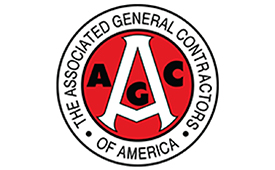AGC: Construction spending stalls between July and August

Total construction spending stagnated between July and August as a decrease in nonresidential projects offset continued growth in residential construction, according to an analysis of federal construction spending data done by the Associated General Contractors of America (AGC).
AGC officials urge the U.S. House of Representatives to promptly approve the infrastructure bill that passed in the Senate in August, noting that spending on infrastructure in the first eight months of 2021 declined from levels seen a year ago.
“Nearly every nonresidential spending segment has deteriorated from already inadequate 2020 levels in the first two-thirds of this year,” says Ken Simonson, AGC’s chief economist. “Meanwhile, soaring materials costs mean that fixed public budgets buy even less infrastructure than before.”
Construction spending in August totaled $1.58 trillion at a seasonally adjusted annual rate, virtually unchanged from July, AGC says. Year-to-date spending increased 7 percent from the total for January 2020 to August 2020.
Gains were limited to residential construction, while nonresidential construction spending slipped in August and through the first eight months of the year. Residential construction grew 0.4 percent for the month and 26 percent on the year. Combined private and public nonresidential construction spending dropped 0.4 percent compared to July and 6.7 percent over the first eight months of 2021 versus the same timeframe in 2020.
Simonson points out that most infrastructure categories posted significant year-to-date declines, with the largest public infrastructure segment – highway and street construction – down 3.4 percent versus January 2020 to August 2020.
Spending on public transportation construction dropped 6.5 percent through eight months of the year. Investment in sewage and waste disposal structures grew 3.8 percent. Funding for public water supply projects fell 1.8 percent, and conservation and development construction dropped 18 percent.
Other types of nonresidential spending dropped through eight months of 2021, as well. Combined private and public spending on electric power and oil and gas projects declined 3.6 percent; education construction fell 10.6 percent; commercial construction – including warehouse, retail and farm structures – dropped 1.7 percent; office spending fell 10.1 percent; and manufacturing construction decreased 0.8 percent.
AGC officials say the nearly universal decline in infrastructure spending demonstrates the urgency of enacting expanded funding for a range of infrastructure project types.
“This [infrastructure] legislation includes the kind of policy priorities that members of both parties have long claimed to support,” says Stephen Sandherr, AGC’s CEO. “There is no excuse for holding these projects hostage while sorting out other priorities. Construction workers, businesses and the public are all losing from delay in passing this legislation.”









